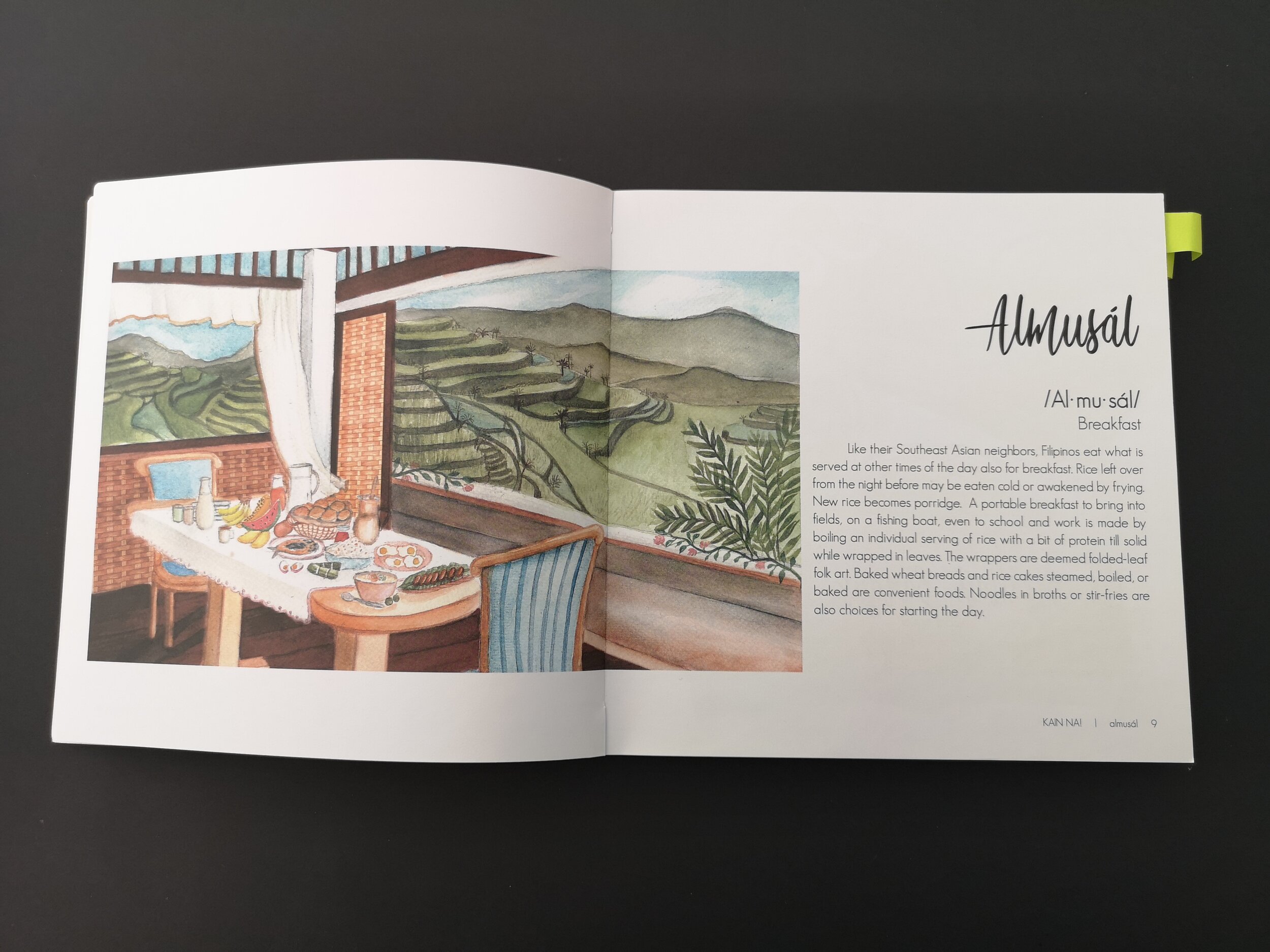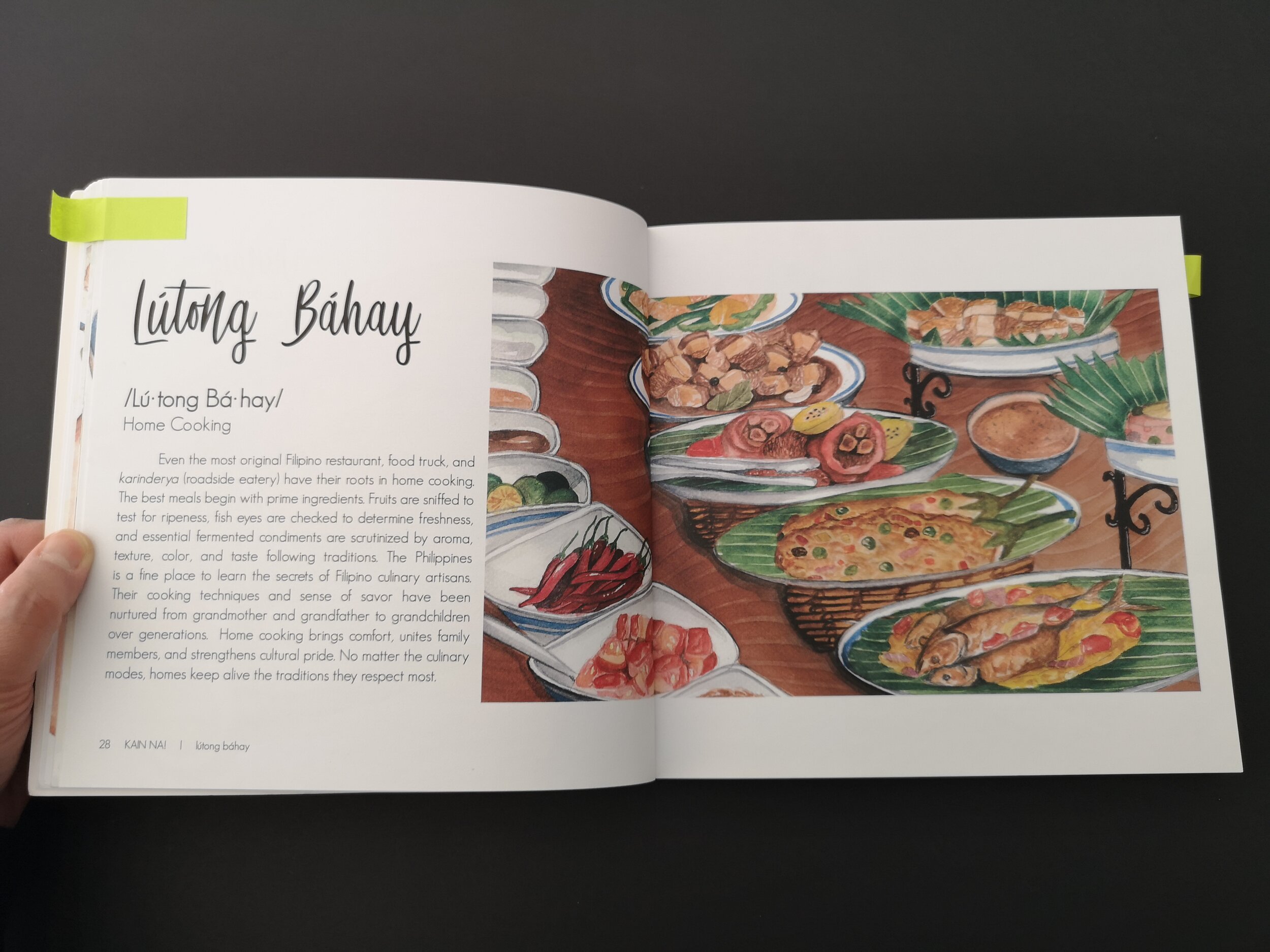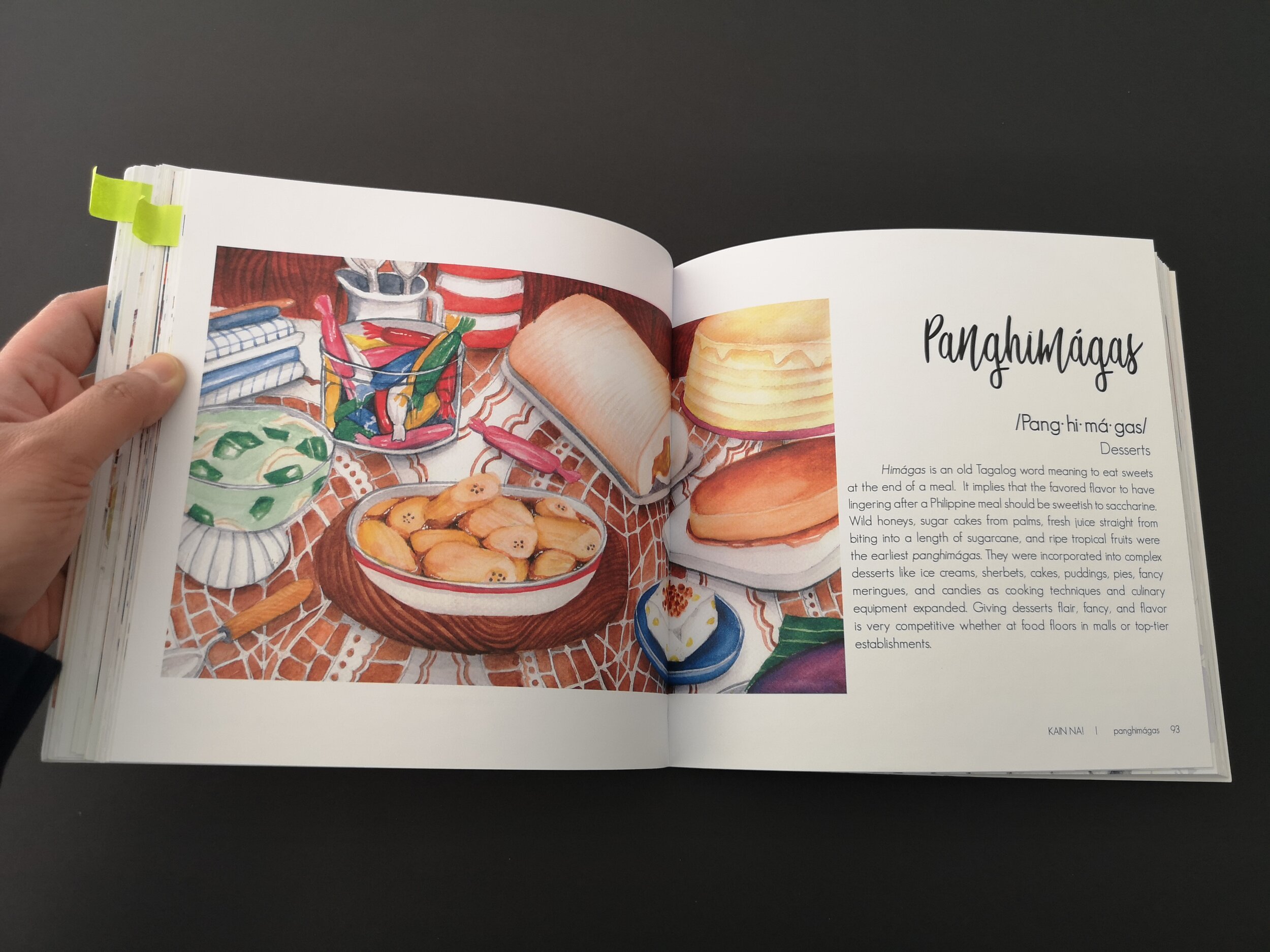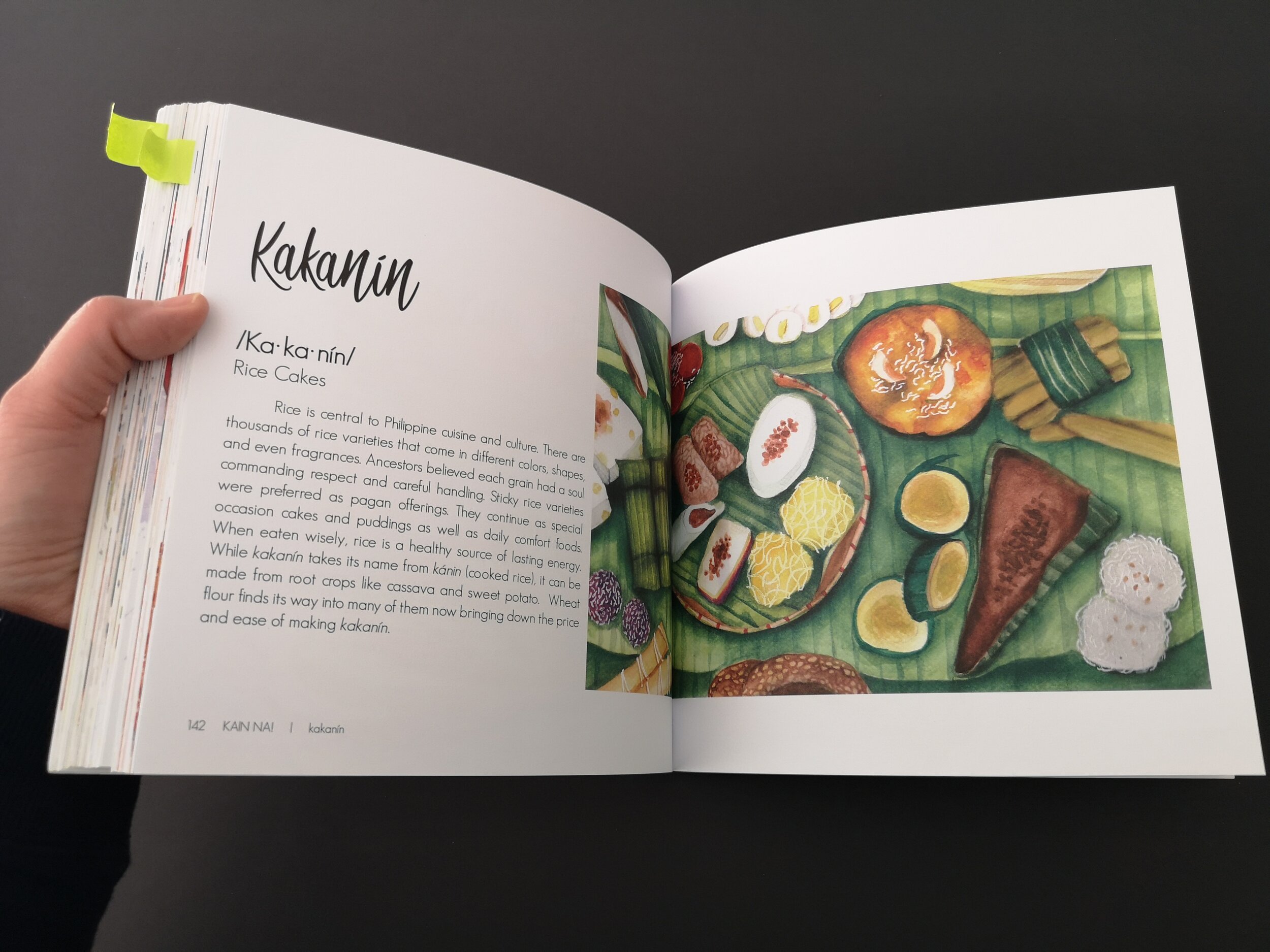Kain Na! An Illustrated Guide to Philippine Food by Felice Prudente Sta. Maria and Bryan Koh
I’ve just come back from visiting Japan - a place that’s held so much mystery and wonder for me in its breadth of understanding why food is essential to the relationship we have with our wider world. Timely, right?
I became obsessed with Japanese cuisine the first time I was out of work and largely home. It was the spring of 2014, I lived in a second-floor apartment that overlooked leafy backyards in Toronto (filled with raccoons) and I’d been looking for a job and going to countless interviews for 7 straight months. I really, really wanted to make my journalism degree matter, but the industry felt otherwise.
My routine, then, was to be up by 8 am, learn how to code for 2 hours (it was the ‘in’ thing to do), break for lunch, send out resumes for an hour, then spend the rest of the day reading a bunch of books from the library. An NHK-produced documentary series called “Trails to Tsukiji” became my go-to show to watch over lunch. I was fascinated with the history and stories behind so many Japanese foods, and I fantasized about making my own documentary series about Philippine food and culture someday. A couple years later, I settled on making a podcast.
I think that “Kain Na! An Illustrated Guide to Philippine Food” by Felice Prudente Sta. Maria and Bryan Koh, and illustrated by Mariel Ylagan Garcia, can open similar doors into the world of Filipino food culture, as “Trails to Tsukiji” did for me into the world of Japanese cuisine.
It’s kind of a pleasure to hold in your hand, knowing you’re about to dive in to something so beautifully written and drawn ❤️
A call to action (in time for Philippine Culinary Heritage Month)
“Eating the Filipino way,” Felice and Bryan write, “is not only a celebration of cooking, but of how valuable relationships are with one another. ‘Kain na’ is the call to table.” And if this book isn’t the best invitation you’ll get to eat at a Filipino table, I don’t know what is!
Of the 90+ Philippine cookery books I have in my collection, this is the only one which groups all the foods I love in this specific way. There are chapters on breakfast (almusal), the snacks I grew up eating (meryenda), foods you eat while drinking (pulutan), rice cakes (kakanin) and dessert (panghimagas).
As I flip through Kain Na’s pages, I remember the spongy puto maya (glutinous rice cakes with coconut and ginger) and sikwate (frothy hot chocolate) I had in Cagayan de Oro’s public market, on the morning of my first visit to Mindanao. I think about the neighbourhood tapsilog spot in my hometown in Manila, where everyone in my high school went on Saturday nights after driving around, windows rolled down and blasting “Country Grammar” from 2001. Sinangag Express is a pretty big franchise now - I wonder how they are faring with COVID?
I read about Vigan empanada and remember standing under the yellow glow of street lights in the city’s public plaza, patiently waiting for my order, while three people - a dough shaper, pastry filler and deep-fat fryer - prepared 20 orange empanadas for the person in front of me. I was mesmerized by how efficiently these vendors worked in such a tiny space.
I think about Spanish bread, a mainstay in most Philippine bakeries that has nothing to do with Spain, and how I really want some right now. About the last time I made palitaw (boiled rice cakes rolled in shredded coconut and sesame seeds) when I invited friends over to the condo overlooking Lake Ontario that I could only afford to live in for half a year.
I glance towards the kitchen and think about the last bottle of basi (rice wine) that I have in my cupboard from a trip to Ilocos, in northern Luzon. It turned into an amber-coloured vinegar approximately a year ago. I’ve used it to make coconut chicken adobo (a hit with my roommates) and, as of yesterday, three batches of skinless longganisa (really one of my favourite freezer meals).
I hope that Kain Na! becomes your gateway to Philippine cookery books. I’m almost certain it will, with the depth of Felice and Bryan’s research, and the way Mariel captures so much of the warmth that Filipino people just exude through their food. I highly recommend finding yourself a copy!






